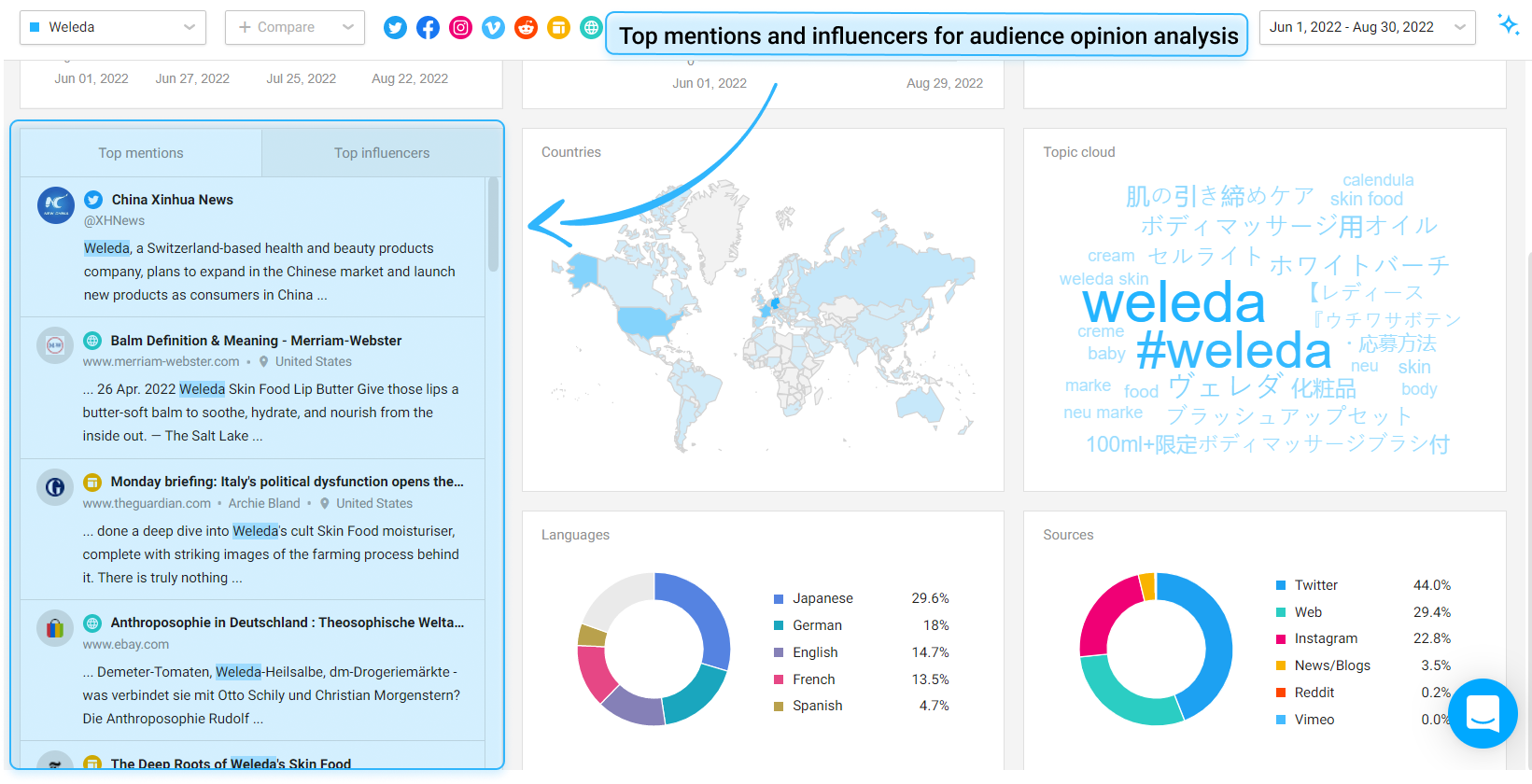8 common mistakes marketers make when connecting with customers via social media

Article summary
Discover the most common mistakes marketers make when connecting with their customers on social media platforms and how you can avoid them like a pro.
"Establish strong bonds with your customers”—this is the most common tip any business gets when starting a profile on social media for their brands. Yes, first impressions matter, but how to do it right?
You can find lots of advice on how to strengthen customer relationships online or in respected publishing like the ‘Bible of Marketing Communication’ or ‘How to Win Friends and Influence People.’ Yet, they might not provide many solutions. Why? Because while knowing what you SHOULD do is great, you also need to know what you SHOULDN’T when addressing your customers.
Empowered with valuable knowledge on what to avoid in your customer communication will allow you to eliminate textbookish methods and help create more natural conversations. Being caught in the whirlpool of massive adverts and polished marketing campaigns, genuine talk is something modern consumers are really missing and value.
By signing up I agree to the Terms of Use and Privacy Policy
Here are our top 8 useful tips on what mistakes to avoid to make your brand conversations natural and engaging.
#1 Talking too much about you
The time when brands had one-way conversations with their buyers over a radio or a newspaper has passed. Nevertheless, some companies persistently keep using “TV-style talk”—they don’t listen to their customers but they talk, excessively talk about themselves. They explain who they are, what their values are, why their product is the best, and a lot more.
But, there’s a catch: hardly any customer will believe how good their products are, knowing that any business today has an entire marketing department aimed at presenting their products and brands in the best light.
So, how can you make your brand and product appealing to your followers and potential buyers? The answer is simple—don’t talk much, listen first, and understand your customers' pain points. Then, try to address their wants and needs in friendly conversations, comments, or even jokes, eliminating all those flashy marketing presentations with lengthy monologues.

#2 Offering no value just sales
There are different ways you can sell your products on social media. The simplest and straightforward is to sell directly in adverts. This method can generate some leads over the short term. However, it won’t let you sell much as your buyers won’t form a strong bond with your brand.
A better way of selling is by offering something of value to your potential buyers. This approach involves several simple steps:
-
Offer your customers something valuable, it can be a free or low-paid masterclass, a seminar, a study, etc.
-
Generate a conversation and develop closer ties with your potential buyers by inviting them to subscribe to your social media accounts.
-
Hold a marketing campaign with sale posts combined with information posts and other engaging content.
The second approach will help you establish closer relationships with your audience, offer the most valuable and relevant content, and, therefore, sell more effectively and through longer periods of time.
#3 Misusing best practices and templates
A joke repeated twice becomes less funny, and a marketing gimmick repeated by an army of marketers becomes banal and cliched. Try to avoid the same mistake in your customer relationship management.
For example, the phrases like: “Huge savings”, “Keep calm and [insert your verb]”, “Next level”, “We do [insert what you do], so you don’t have to”, “Best-of-breed”, “World class”, “[Insert your number] people can’t be wrong” have been used so many times that catch the eye of any experienced online buyer and also get included in every list of cliches to avoid on any decent website about marketing.
Meanwhile, “Belong anywhere”, “Move the way you want”, “Do what you can’t”, “Just do it”, and many others are recognizable and associated with major brands. Simple, but oh-so-effective. You can also try to create unique content for your customers to show your product and brand authenticity and difference.
The rule of cliches isn’t limited only to words that you shouldn’t use in your social media messaging, it could also relate to social media marketing campaign techniques, visual design, and other marketing and PR instruments.
A great example video on visual design cliches: The world's most hated art style.
#4 Overpromising results
Customer disappointment. What could be worse for marketers when they try to establish trustworthy communication with their audience? No marketer in their right mind would aspire to worsen their relationships with their buyers and followers. So, why does overpromising that sets so many customers at odds with brands still happen in the world of marketing? There are several reasons for that:
-
Inability to look into the future and desire to earn a quick income.
-
Increased silos between product and marketing departments.
The negative result of overpromising can be really shocking for a company’s brand reputation. Word of mouth quickly spreads around social media and if a company fails to neutralize a reputation crisis at its early stage, it can become international or even worse–get into the “Top Worst Marketing Failures of All Times” book and be recorded in history. But seriously, the reputation crisis usually leads to a quickly increasing churn rate, loss of income, risk of closure, and other hardships.
How to avoid overpromising? There are some steps you could do to keep your business away from it:
-
Improve data transparency between your marketing, sales, and product departments.
-
Elaborate a clear brand positioning statement–how your brand or a product can satisfy your customer needs and which market segment it belongs to.
-
Carefully work on your brand’s tone of voice.
-
Improve your relationship marketing so that even in the darkest times you’ll have your brand loyal advocates.
#5 Being too pushy
Even if you create outstanding promoting content for your social media, too much advertising can be harmful to your brand. Social media followers tend to quickly get tired of massive promos and to minimize the number of ads, some can spend a couple of minutes to find out where the “Unsubscribe” button is. To scale your campaigns effectively and maximize profits, tools like Voluum can help you track ad performance in real-time, ensuring you’re delivering the right content to the right audience without overwhelming them.

By signing up I agree to the Terms of Use and Privacy Policy
To minimize the ads' annoying effect, you can make three important steps:
-
Reconsider the number of promos in your content plans—careful content planning is essential for effective advertising and successful marketing campaigns.
-
Сompensate your ads with valuable content—consider the various types of posing in your social media, this can be contests, useful and fascinating facts or studies, entertaining videos, and many others.
-
Dent your messaging, emailing and calling enthusiasm—this way you’ll give your followers a break, try to engage your customers with more attractive special offers, longer contests, and impressive collaborations instead.
#6 Hearing but not listening
Marketers are continuously striving to make their brands super-polished and appealing. Being brand-centered, they can completely forget to listen to their audiences and find out their followers' opinions. As a result, the brand starts speaking to itself, while the number of leads keeps falling as well as the audience engagement.
How to turn your brand from a passive listener that only registers followers’ activity on their social media page into an active listener and conversation participator? One of the effective ways to do so is to use social media listening tools such as Awario.
Awario can simply help businesses discover their customers’ concerns, desires, and needs. It swiftly gathers the latest tweets and posts on the industry and brand-related issues, unveiling customer thoughts, and opinions to businesses. Moreover, with Awario’s assistance, businesses can quickly track negative tendencies such as peevish feedback or irritated customer queries practically in real-time. This way, businesses can quickly fix the issues and prevent the brand crisis at its very inception.

#7 Ignoring customer data
Customers can provide your business with tons of valuable data from how your brand performs on a social media platform to new ideas for posting and marketing campaigns. However, to gather all this knowledge manually, scrolling through media news feeds, or entering business data on various platforms can be a real nightmare. That’s why lots of marketers use various analytics tools for quick insights, instead.

You can also create your own set of analytics tools to get the most informative and detailed data from several social media platforms and compare your brand performance to them. For example, you can use:
-
Google Analytics to find out the number of people, their session stats, geolocation, browser, and devices they use to visit your business website.
-
Embedded into the social media platform analytics to learn more about your social media followers–how many followers have visited your page, when and why they’ve opened your brand business profile, which marketing campaigns or stand-alone posts gained the most views, and more.
-
Awario social media listening tool to discover what people talk about your brand and your competitors around the web or on selected social media platforms, what are the general trends in your industry, detailed follower demographics, positive and negative feedback about you and your competitors, keywords associated with your brand and your competitors, and much more.
-
Being fully equipped with robust analytical tools, you’ll be able to discover the latest trends in your business domain, precisely identify who your followers are and their necessities, and participate in the most lively discussions around the web.
#8 Building brand/customer healthy relationships
Any healthy person-to-person relationship is based on respect. The same rule can easily apply to brand-consumer interaction. When a brand and a customer converse as equals and treat each other as individuals there won’t be any communication distortions.
However, sometimes brands in their attempt to position themselves in the market use a parent-to-child communication style. Explaining to your audience what they want and talking at them, not to them is one of the worst techniques marketers can use. That’s why brands need a well-elaborated tone and personality before going to social media.
Before you go…
Building strong and long-lasting relationships with audiences is one of the most challenging tasks that marketers can face. When they manage to do an excellent job this results in a quickly growing number of followers on social media, increasing revenues, and growing popularity.
To connect to their customers successfully, lots of marketers use various marketing tools such as Google Analytics and Awario to learn more about their audiences and, therefore, create more relevant content as well as better cater to their followers’ wants and needs














